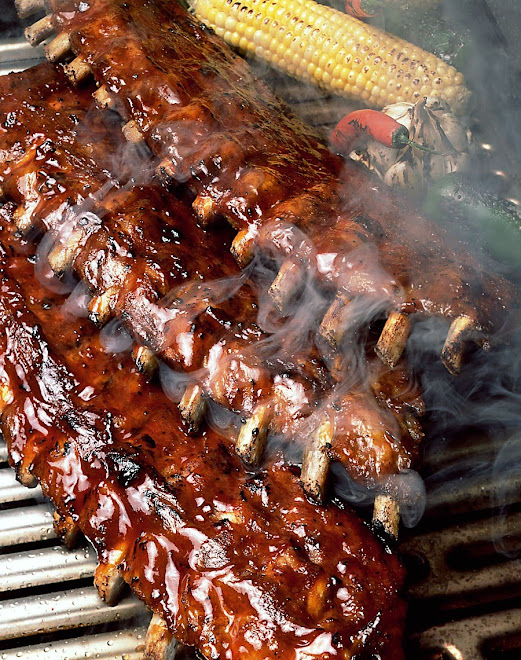
Rubs are for the most part, dry ingredients (herbs, spices and seasonings) that are rubbed or sprinkled on meat before cooking to enhance the flavor when cooked. A dry rub is a form of marinade, however rub has an advantage over a marinade, in that it forms a tasty crust on food when it is cooked. Rubs are used to provide a higher degree of concentrated flavor to larger cuts of meat like beef brisket and pork shoulder. These cuts of meat will taste very bland without a good sprinkle of rub. Rubs are sometimes used as the basis for a table or finishing sauce for your cooked food, but most often rub's magic is done before the cooking process is over.
Ingredients in dry rubs vary, depending on the kind of food you are using, but some items are more common than others. Salt and sugar seem to appear more often then anything else, andsurprisingly are often the most controversial. Some cooks say that salt drys the moisture out of meat, and everyone agress that sugar burns on the surface of food. If making your own rubs keep these two ingredients in check. Use them in moderation in a way that supports the rub rather then overpowers it. Garlic powder, onion powder, chili and lemon pepper seasonings are also very popular. Secondary seasonings such as dry mustard, cumin, sage, thyme, allspice, cinnamon, nutmeg and ginger are used to round a rub off nicely.
If you are making your own rubs, use finer ground spices for rubs on thinner cuts of meat, as these break down and and flavor the food faster. Use coarser ground spices for larger, thicker cuts of meat, as these will not break down as fast and will give you more flavor when cooking over a longer period of time.
When applying a rub to meat I don't actually rub the spices into the meat, as the name would suggest. Rubbing causes the pores of the meat to clog up. In addition if you have ever rubbed a rub into a cut of meat, where does most of the rub end up? On your hands!
When applying a rub, add it thoroughly and evenly. Generally you don't need to skimp on the amount, though some dishes benefit from a light touch. Allow flavors of the rub to penetrate the food by covering it and leaving it in the refridgerator for a while. Fish fillets and shrimp usually need to sit for 1-2 hours, big cuts of meat can be left overnight, and other kinds of food are somewhere in between.
Next week I'll share a couple of great Rub recipes with you.

